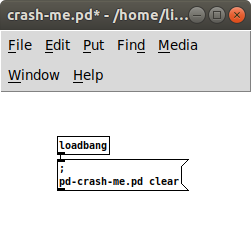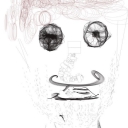I've been working on an auto-destructive listening device. Every time you listen to the sound it is slightly but permanently destroyed.
Made using PD, running on a Raspberry Pi.
-
Everything you love will one day be taken from you (prototype)
-
This is great. Can you re-load a new sample, or does this violate the principle?
I assume you know about William Basinski's Disintegration Loops?
-
Thanks!
Yes, this is certainly a bit of a reference to Disintegration Loops.
Technically you can reload a new sample if you like, but I'm working on some ideas for trying to enforce the permanence of the destruction in the final version
-
nice red button!! where did you get it from?
-
@Johnny-Mauser ha, yes I love that button!
 I found it at an outdoor market in Geneva, some guy was selling hundreds of crazy components scavenged from various places. I sadly only had room in my luggage for a handful of them...
I found it at an outdoor market in Geneva, some guy was selling hundreds of crazy components scavenged from various places. I sadly only had room in my luggage for a handful of them... -
@amazingrolo I use and like these. But would have also tried yours!!
-
@amazingrolo What ideas have you come up with for securing your patch?
You could add this "feature" so that PD crashes when you try to open the patch (though a determined user will always be able to get around these things).

-
I like it. Conceptually it reminds me of "I am sitting in a room" or Cory Arcangel's "Iron Maiden's “The Number of the Beast” compressed over and over as an mp3 666 times".
-
@LiamG ha, that is fantastic!
The way that the patch works now means that the original sound isn't really accessible anyway, since the sound is kept in an array, with the array set to save contents. that array is modified (using a wavetable) and then saved. So in a lot of ways I'm not too worried about whether the patch is accessible. The important part is to make sure that the original sound doesn't exist anywhere else, which is remarkably hard to guarantee in today's world of multiple backups! The only thing I can think is that when I make the final version I will document the destruction of the source material as much as possible - I think this will mean recording onto an SD card, editing the sound directly off the card, loading the sound directly from the SD card into the PD array, and then removing that SD card and physically destroying it.
I suppose if I make this machine for anyone else I'll have to create a certification system that ensures that the proper destruction protocol was adhered to

-
@arratik yes absolutely! those are both wonderful.



